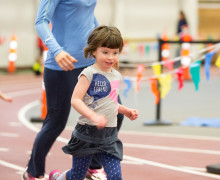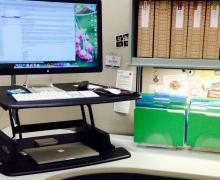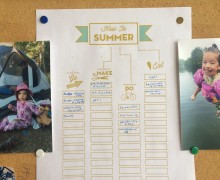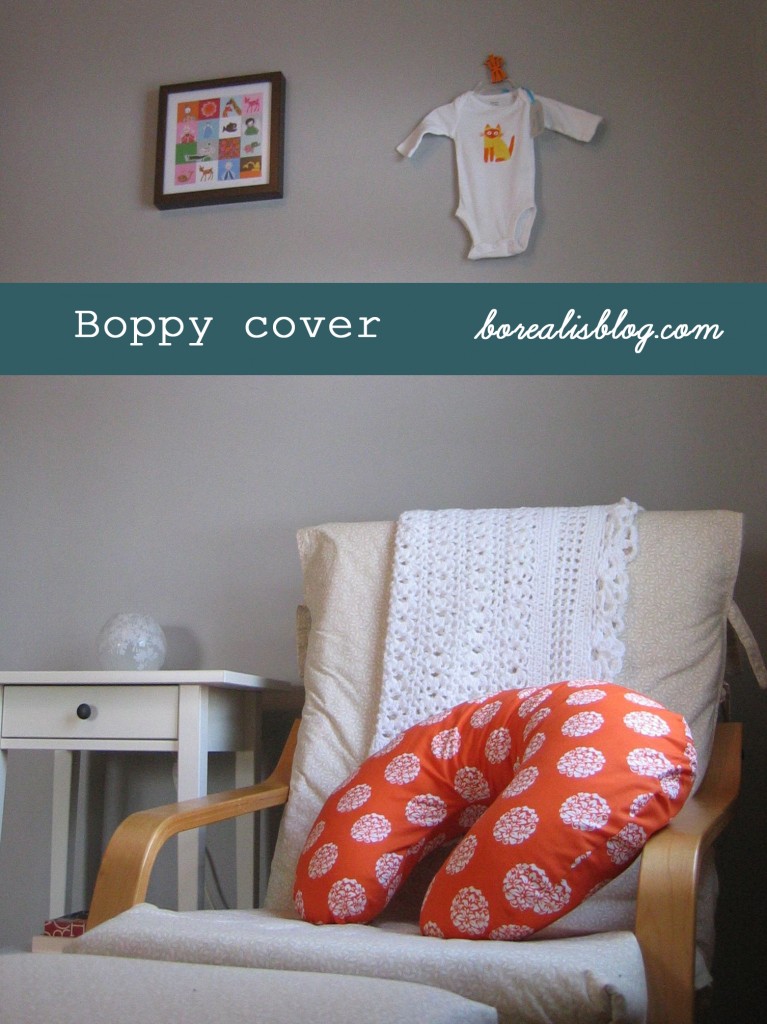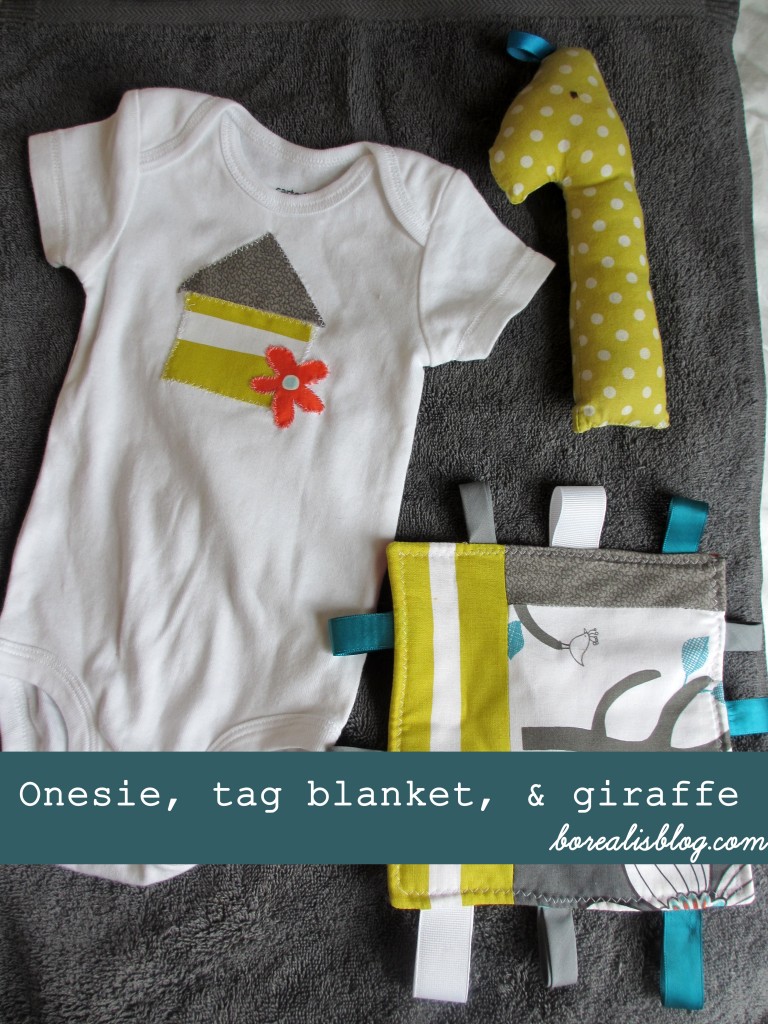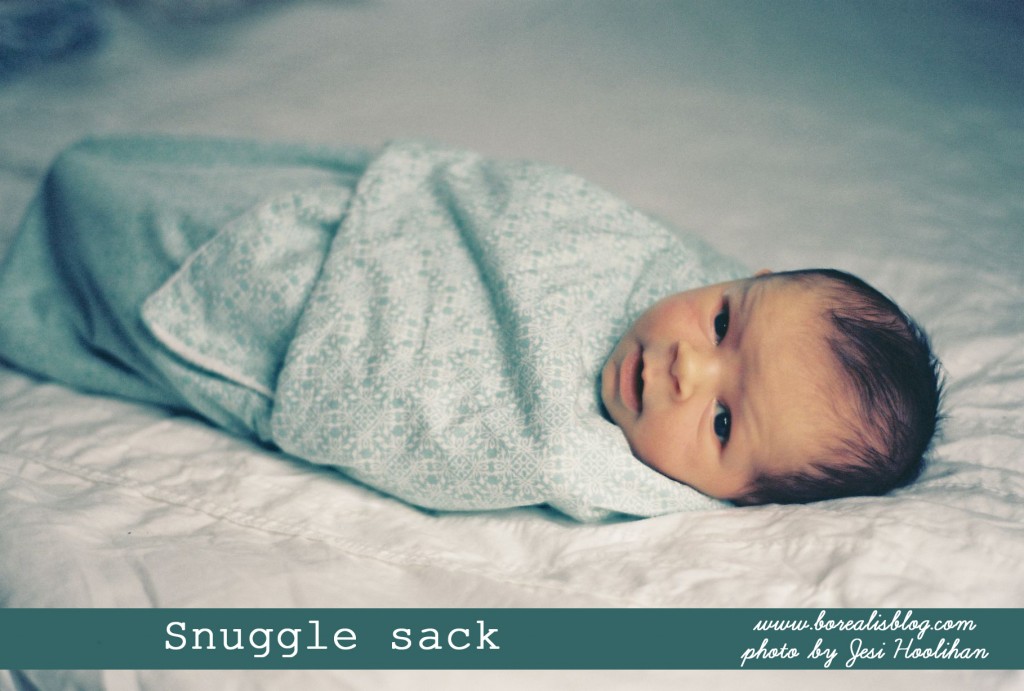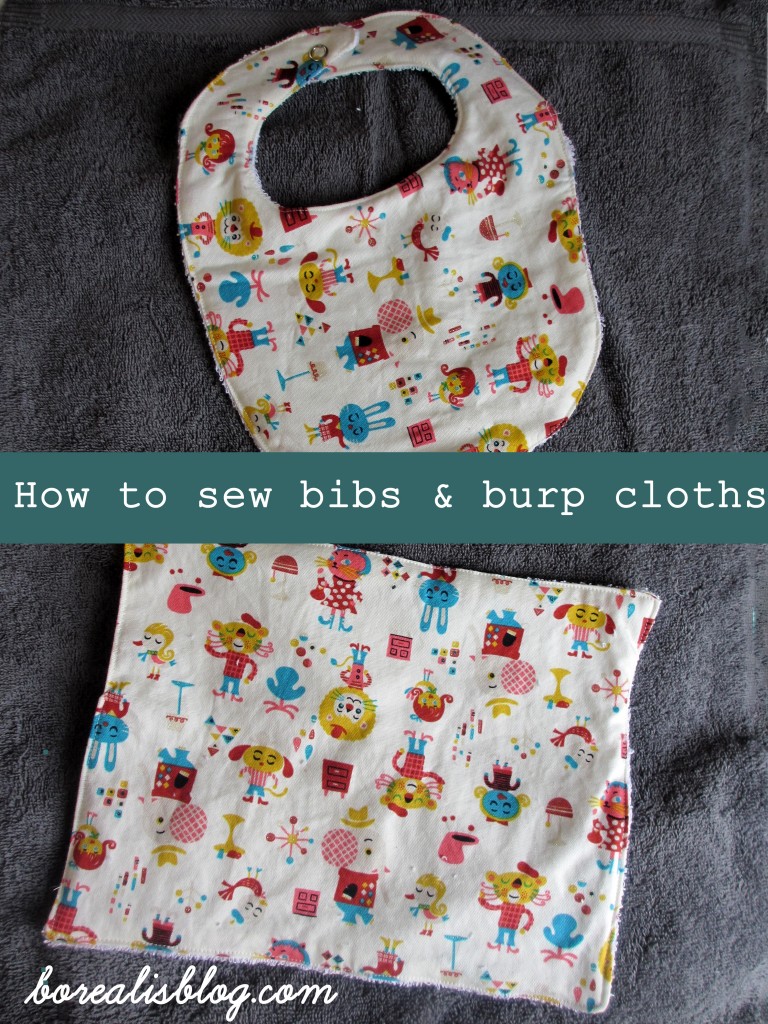Sewing for babies is just about the easiest and most satisfying sewing work you can do. The projects are small so they whip up fast, and with the long lead time (9 months!) you can mosey your way through them.
I did a LOT of sewing for Beatrice (not so much for Blythe, but she got the hand-me-downs). Here’s a run-down of some of the things I made and my favorite baby sewing tutorials.
Boppy cover
This tutorial from Vanilla Joy is perfect and easy to follow. This is actually a quick and easy project, even with the zipper! If you haven’t sewn a zipper before don’t be scared off — this is a good novice zipper project. JoAnn Fabrics stocks a nice long white zipper called a “robe zipper” that works well for this project. I ended up making two covers for myself, an orange one and a second out of a waterproof home decor fabric (if you have a baby, you’ll understand why I wanted a waterproof fabric).
Giraffe rattle, tag blanket, and onesies
The giraffe is beginner-friendly project, also from Lotta Jansdotter’s Simple Sewing for Babies. The resulting soft rattle is a perfect new baby toy because it is safe for the youngest baby and easy for an infant to grasp. You can throw it in the wash to keep it clean, which is nice since babies usually teethe on it. I like to make these in batches of three or four because they are kind of poky for such a small project.
Jen made the onesie and taggie for me when Blythe was born. I asked her for the tutorial and she said she just made it up. Here’s what she said about them:
Taggies were new when my son was a baby — 13 years ago! — when everyone realized if you give a stuffed toy to a baby, they just play with the tag. They are super-fun baby gifts to make, because you can customize the fabrics to the mom’s style, they are small and thus don’t contribute to clutter in her house, and they come together quickly.
- Piece some scraps together until you get a squarish design you like, then cut a backing piece to size.
- Cut 3-inch pieces of ribbon, bias tape, or trim to make the loops/tags. (Try to mix up ribbon textures — satin, grosgrain, velvet — but make sure the ribbon is washable and chewable. No synthetic crafting ribbon.)
- Put the right sides of your pieced top and backing together, then tuck the loop end of ribbon inside and pin. The excess ribbon should be hanging outside. (I always seem to pin the ribbon to the wrong sides and end up with it on the top of my taggie or the raw ends hanging out and then I have to rip out my seams. Take a second to think it through so you don’t make my mistakes.)
- Sew all the way around, leaving an opening to turn the taggie. Trim excess ribbon ends to reduce bulk.
- Turn. Tuck in opening and pin. Top stitch all the way around to really secure ribbon tags and finish the piece. (I use zigzag to hide my imperfections.) This also closes the opening.
I love the idea of applique but I really don’t know what I’m doing. I was happy with the way the house turned out, but I really just got lucky. I cut the design, adhered it to the onesie with iron-on adhesive, then sewed around it with my machine, slowly, on zigzag (again, to mask imperfection). When the design got too tight for that (like around the flower) I sewed it by hand. I’m sure there are much better ways! (And Breanne will have to tell you if it held up in the wash!)
Nursing cover
This pattern makes a generous nursing cover and goes together pretty fast. You have to buy boning, which is available from Joann’s and the like on a big spool that they cut at the counter for you. I did a rookie mistake and made mine in bright orange, later realizing that nothing says “I’m nursing!” like a giant orange cover. I subsequently favored a hand-me-down one in black. And then ditched that altogether when I got really good at nursing discretely.
Snuggle sack or sleep sack
I used Lotta Jansdotter’s pattern for this from Simple Sewing for Babies. It’s a cuddle-fleece lined sack with velcro wraps that the baby can snuggle or sleep in. It’s pretty straight-forward if you go slowly. Here’s Blythe in hers, taken when she was two weeks old.
Bibs and burp cloths
I love sewing bibs. Everyone could always use a bib, and bibs made from regular sewing cottons wash up great and are the most stain resistant out of all of my bibs. The ones I made have proven to be our favorites! I started with the bib template from Lotta Jansdotter’s Simple Sewing for Babies for sizing, but since then I’ve just traced our favorite bibs and used that (adding 1/2 inch for seam allowance).
I cut out one bib from the template and then place it, right sides together, on a piece of coordinating fabric (the finished product will a reversible bib). Using the cut bib as a guide I sew allow around edges leaving a 1/4 inch seam allowance, and leaving a gap of a few inches at the end so I can turn it inside out when I’m done.
Then I cut out the bib and turn it inside out, pushing out the corners of the bib ties with a turning tool or leadless mechanical pencil. Then I finish it by sewing right along the seam around the entire bib, closing the gap I’d left carefully and sewing it shut.
I like the finished look of snaps (and the ease of washing velcro-less bibs) so I use a snap-setter and a pack of size 10 snaps. The snap-setter is a bit fussy (or maybe I’m just bad at it) but all my snaps have held great so I keep on. But velcro would work just as well.
My favorite burp cloths are a simple style that I just put together. On one side I use a cute fabric, on the other I use a Gerber cloth diaper (these are sold at Target and are really thin white squares, nothing like a real cloth diaper), white terry cloth, or other cute white fabric.
I sew a square or rectangle of fabric (as small as 7 x 7, or as big as the size of a Gerber cloth diaper) right sides together with the diaper, with the usual 1/4 inch seam allowance and gap for turning inside out. When I’ve sewed around the edges I turn it inside out and finish by sewing right along the edges, closing the gap I’d left. If the resulting cloth is bigger than the palm of my hand (and it usually is), I sew a line or three down the center of the cloth to anchor the fabric to the burp cloth. I usually make these to match the bibs for a sweet little add-on to my regular (store-bought) present.
Bouncy seat cover
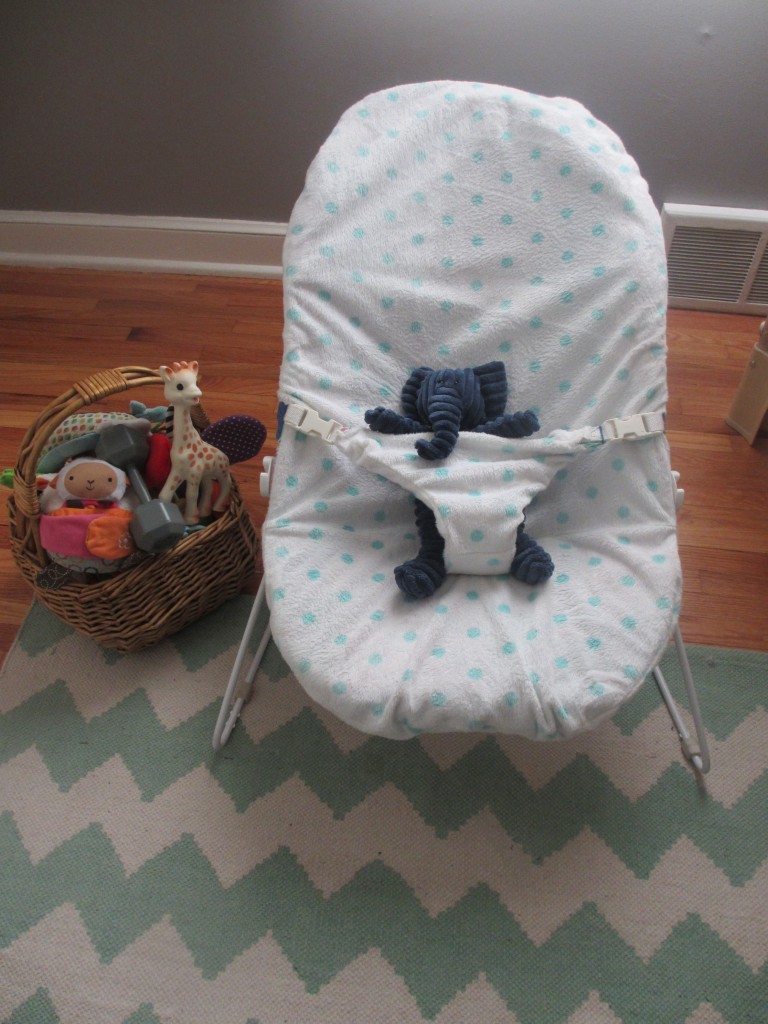
This one is a bit more advanced, but doable. I borrowed a dated bouncy seat from a friend and wanted a prettier cover. So I took it off and studied how it was put together, and used it as a template to create a new cover in fleece. I ended up having to sew the buckle part to the seat, but I figured I could snip it off when I was done or needed to wash it and sew it back on. The end result was so cozy and cute — I’m glad I took the time to do this! (It was a pretty quick project though — under an hour).
Baby quilts
I made two quilts from Amy Butler’s Little Stitches for Little Ones, one in pink and one in blue. Baby quilts go together so much faster than regular quilts and are small enough to machine quilt. With big squares this quilt pieces together pretty easily. I never needed the blue one for myself, but it made a handy gift when I had a nephew!
Soft blocks
Blocks are a great project for using up scraps. Again from Amy Butler’s Little Stitches for Little Ones, this pattern has you sew six small quilt blocks together to form a hollow cube. Using craft foam you can buy from Joann’s and cut to size with a bread knife, you insert a cube of foam into the fabric cube you’ve constructed (one corner is left open) and then sew it up. I also made the coordinating bag to go with it to keep the blocks tidy (although I skipped the monogram). My only disappointment with these blocks is that Bee has never been very interested in playing with them!
Happy sewing!

